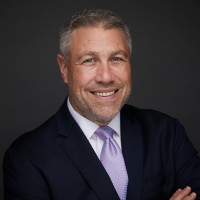The concept of the reverse mortgage is active all over the world. While different countries see different levels of reverse mortgage success, analysts and researchers at institutions like the World Bank and the Brookings Institution see a greater potential for reverse mortgage products to provide solutions to increasingly cash-strapped seniors both within and beyond the borders of the United States.
That said, there may be some lessons from other parts of the world that are involved in the product category that may help to streamline the operations of reverse mortgages domestically, and at least one American lender has already taken some lessons from the way that home equity release works in the United Kingdom. This is according to Chris Mayer, CEO of Longbridge Financial during his discussion at RMD’s HEQ event this month.
Market differences
In many other parts of the world that have reverse mortgage products, the name itself isn’t a predominant descriptor for the product category, Mayer says. Like it is here, there is a perception that comes with the name “reverse mortgage,” so many other lenders in other parts of the world have leaned on different nomenclature.
“In most parts of the world, they refer to this as equity release, not reverse mortgages,” Mayer explains to Aging Media Network’s VP of Content Elizabeth Ecker during the event. “Elsewhere, as here, reverse mortgages have a taint to the name that’s not perfect.”

Most countries offer mortgage or debt-based products, particularly in the cases of the largest countries, Mayer explains.
“If you look globally at the places that have gotten the most traction, the U.K. is probably the largest,” Mayer says. “On a relative basis, on a per capita basis, the U.K. is about five times larger than the U.S. is. Probably my favorite statistic in the U.K. is that a year ago, about 36% of all mortgages originated to people 55 and older were equity release mortgages.”
This statistic presents a major difference with the market penetration of reverse mortgages in the United States. According to HMDA data in 2018, there were 1.3 million new mortgages including home equity lines of credit (HELOCs), traditional mortgages and purchase loans that served the typical reverse mortgage demographic of clients at or over the age of 62, Mayer says.
When the percentage of home equity release penetration is compared between the U.S. and the U.K., there is very little comparison to make, he explains.
“So in 2018, for example, there were about 36,000 reverse mortgages and 1.3 million traditional mortgages,” Mayer says. “So, if you think about that market share, it’s really 2.5%. In the U.K., it’s 36%. So, [there is an] enormous difference.”
How the U.K. structures equity release
Some of the other differences that may help to account for this difference is the way the home equity release products are structured on a compliance basis, Mayer explains. Differences in the way a loan is underwritten helps to illustrate this.
“When [lenders in the U.K.] underwrite a product, they’re required to show that somebody is going to be able to make payments for the life of the loan,” Mayer explains. “And, for somebody who’s in their 60s who is not expected to work over the length of the loan, they actually have to look to demonstrate that the person(s) can be able to make the payments using their retirement income. That’s a very, very big difference between here and there.”
If people underwrote mortgages for a senior while realizing that a 30-year product may not be appropriate for someone in their early-to-mid 60s, many would realize that a traditional mortgage for a senior may not be a very appropriate product. This is particularly true considering their ability to make payments over the life of the loan if they’re not working, Mayer says.
“That’s a very big difference between the U.S. and the U.K., and one of the reasons that reverse mortgage/equity release companies have had traction [is] because of the recognition that you’re giving somebody a payment that you really have to underwrite based on their ability to make those payments in retirement, including [with] their retirement income,” Mayer says. “If people have problems qualifying for financial assessment — which a few borrowers do here [in] just making tax and insurance payments — you can imagine for many of those people, putting them into a traditional mortgage doesn’t make a lot of sense.”
Another difference between the U.S. and U.K. reverse mortgage markets is the approaches to financial planning, where U.K. planners can get licensed and paid to offer reverse mortgages the way that they would offer any other product, Mayer says.
“I know that’s anathema [in the U.S.],” Mayer says. “We have RESPA and a lot of issues here. But […] one of the challenges that planners have, I suspect, is that it’s hard to be convinced to offer a product that is in the best interest of the client. We’ve had more and more financial planners who use a best interest, or even a fiduciary standard, but still many of them are paid for offering almost any other product, and so it does present a difference.”
This is not to say that the American norms regarding the payment of planners should change, but just to highlight the differences between the two countries, Mayer explains.
Funded by insurance companies, not securitization
A final highlighted difference between the two territories is that in the U.K., mortgages are “mostly” funded by insurance companies, Mayer says. This has some specific advantages when compared with funding via securitization, he says.
“There’s a stability associated with having products that are funded by regulated entities, not by securitizations, which can do well [or] can do poorly,” Mayer explains. “Relying on securitization has problems when the markets melt down. And so in the U.K., relying on insurance companies predominantly — and also pension funds — has some stability associated with it. It’s also longer-term capital. They look at the market a little bit differently.”
In nations like Canada and Australia along with many parts of Europe, the products are funded primarily by banks. This is a difference as well, but that model can present its own share of problems, Mayer says.
“Banks are not the perfect solution because banks are funding with short-term deposits,” Mayer says. “And if they have issues with deposits, if regulators come in with challenges, their deposits are short-term. They can come in, they can go out, they’re competing with money market funds. Funding things with a shorter-term funding [source] may be less reliable at times.”
This was a lesson Longbridge learned and applied to its own proprietary reverse mortgage product suite, Platinum, which is being backed by entities with longer-term financing, Mayer says.
“I think that longer-term financing has kept the product in market, and certainly did in the U.K. as well during times of trouble,” he says. “Whereas relying on securitization works until it doesn’t. And then when it doesn’t, there are problems. And so those are, at least to me, a few of the lessons that we can take away from people in other places.”





